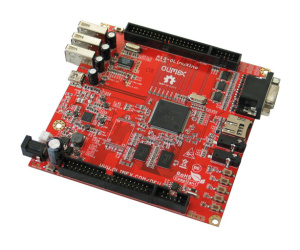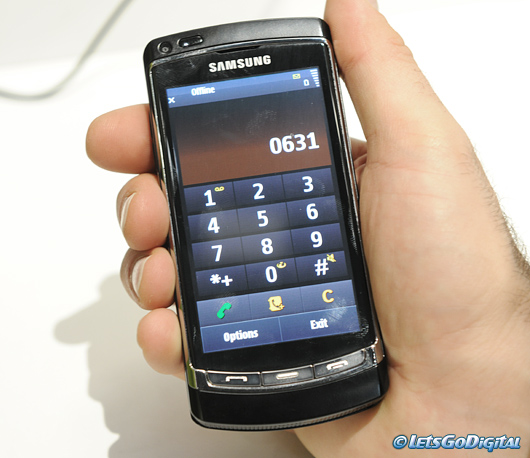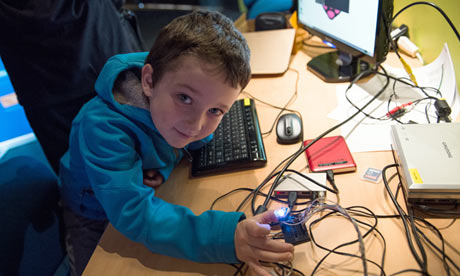 I just read a rather frank, definitely honest, article by Hyperpessimist about how much it really costed him to own a Pi.
I just read a rather frank, definitely honest, article by Hyperpessimist about how much it really costed him to own a Pi.
Costs of the Raspberry Pi – The Hyperpessimist.
Of course, he doesn’t take into account the many people that have a few of these items already (especially SD cards), and that actually many of us can choose to charge their mobile or power their Pi, but he does make a good overall point. Although the Pi itself is a $35 piece of kit, to actually get it working you’re looking at between $65-100 to actually turn it into a computer.
So, I decided to test his theory by conducting my own little research experiment.
Raspberry Pi into Personal Computer – How cheaply can we do it?
Introduction
First off, let me say that I am going to go at this from the point of view of having nothing. The Hyperpessimist had a screen, keyboard and mouse. I will have none of these for the purposes of this post. So, this should be a true reflection of going from zero to Pi hero.
Secondly, my aim in this experiment is to have a fully working Pi that is fully updated and shows you a graphical interface (i.e. X windows) and, for instance, play Quake 3 or browse the web.
Thirdly, I’m going to exclude any source of components or peripherals that isn’t mainstream. i.e. Apart from the Pi itself, I’m going to try and stick to well-known websites or high street stores. No eBay for me!
Fourthly, I tried a few suppliers for the peripherals: eBuyer, Dabs, Amazon, PC World, Pixmania. As it turns out, the best deals are to be found on eBuyer and, to save on postage (and my own sanity) and knowing they’ve always been good on price, I stuck with them throughout. You might be able to save 50p here and there elsewhere.
Buying the 512MB Pi – £35
I’ve already covered buying a Pi in a previous blog post. So, I’ll use that as the source for finding the cheapest. It seems that my top 5 suppliers are all roughly around the £30-35 mark including delivery. So, we’ll go for the upper end of that as a nice round figure.
A monitor – £83.50
You absolutely positively definitely want to go down the HDMI route for the screen. A composite monitor is not going to be good enough to play something like Quake 3 or even to do word processing without giving you eyestrain. I found this one on eBuyer: Extra Value 19″ DVD combi TV – £79.99. Admittedly, it’s a special offer, but I’ve found in the past that, generally, there is always a special offer on this kind of thing. Still. £80 for a standalone DVD-Monitor combi that happens to have an HDMI input sounds like a good deal to me. You’ll also need an HDMI cable for it as I doubt it comes with one. So, add on a rather nice cable with rotating connectors for £3.50.
A keyboard and a mouse – £6
These should be cheap-as-chips really. Again, eBuyer has a good selection at a low price. This keyboard is fine and is only £2.99. £2.96 gets you a fairly decent mouse from eBuyer again. Or, you can pop down to Tesco or your local Poundland and pick up something equally as cheap.
An SD card – £4
You will need a class 4 SD card to be sure it’s compatible with the Pi. Actually found one cheaper than I thought I might. I went for an 8GB card, just for that extra bit of storage space when you need it most. I went for a micro SD with an adapter a) because of the price (and it includes the adapter to let you plug it into a normal slot) b) because it’s a Kingston, which are very reliable and c) because you can now get an adapter (here or here – this last one is difficult to get in the UK) that reduces the size of the bit sticking out of the Pi.
Connecting to your router – £10.12
If you don’t already have it, you will need a length of CAT 5 network cable (which is all of 64p) to plug into the network port on your Pi and into the back of your home internet router. Eventually, you will probably want wifi network access, in which case you would need a wifi dongle. The usual one to get is the ‘Edimax with the gold connector‘. If you’re going to get a different one, I suggest going to the Wiki that lists peripherals.
Conclusion
In theory, this should be all you need. So, here we go:
Raspberry Pi 512mb board – £35
Monitor+cable – £83.50
Keyboard and mouse – £6
SD card – £4
LAN and Wifi – £10.12
Case (either ModMyPi or Crytech) – £12
Powered USB hub (because you’ve got three USB devices there) – £15
Grand total: £165.62
That probably seems like a lot, given that the Pi is sold as a $35 computer. (This still makes me wince and chuckle – it’s a UK-based company, so where’s the £ ego price?) Suffice to say, it’ll probably cost you £35 (including tax and delivery) for the Pi itself but then you’ve got another £100 to pay to get going from having nothing.
However, compared to other computers that can do similar things, that’s not at all bad.
You will want a case for it. I haven’t included it as strictly speaking you can do without, or make your own from LEGO or cardboard. For value for money, I recommend the GAMBLE case from ModMyPi. You don’t get to choose your colours, but it only costs £3+postage.
Wait until you start experimenting with the GPIO pins though! Then everything is £5 here and £7.50 there…
I’m happy to have done this little study. The Hyperpessimist was a little bit wide of the mark at $100 without several things. As a matter of fact, there’s more value for money than he thought.
[I edited this article after it was pointed out I hadn’t counted the cost of a case or a hub]



 I just read a rather frank, definitely honest, article by Hyperpessimist about how much it really costed him to own a Pi.
I just read a rather frank, definitely honest, article by Hyperpessimist about how much it really costed him to own a Pi.


